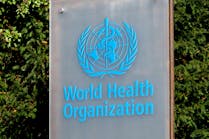A 2017 article in Healthcare Purchasing News explored opportunities for health system pharmacy and traditional medical-surgical supply chain leaders to learn from one another. But despite the article citing some compelling real-world examples of where it is working, hospital pharmacy and supply chain collaboration remains the exception versus the norm seven years later.
In this column, we will revisit some of those opportunities, especially in light of broader macro trends, such as the move to non-acute care and ongoing supply and drug shortages.
Lessons from the supply chain
Over the past two decades, the traditional medical-surgical supply chain has made notable progress toward less costly touchless orders through the use of ANSI transaction standards to automate purchase orders, confirmations, and invoices. On the pharmacy side, due to an historic reliance on group purchasing organizations (GPOs) and wholesalers for procurement, fewer pharmaceutical manufacturers compared to their device peers are able to receive electronic purchase orders (850s) or send electronic confirmations (855s) and invoices (810s). Supply chain leaders can help their pharmacy counterparts with their transition to more efficient procure-to-pay processes and the associated analytics made possible through greater integration with enterprise resource planning (ERP) systems.
Pharmacy can also benefit from supply chain’s expertise in contract and price negotiations, especially as pharmaceuticals account for an increasingly larger percentage of total hospital expenses.
Lessons from pharmacy
Pharmacists, meanwhile, have years of experience managing the complexity of multiple classes of trade, which impact the price paid for pharmaceuticals and ultimately the cost incurred by patients. This consumer-driven approach could help inform those managing the medical-surgical supply chain as they consider the implications of the move to care settings outside of the hospital and the application of various value-based payment methodologies.
Pharmacy also has more experience using a standard identifier (the NDC, or national drug code) as the common code for prescribing, dispensing, reimbursement, and clinical decision support for pharmaceutical. The NDC was also the basis for the 2004 US FDA pharmaceutical barcode rule, which has increased barcode scanning of medicines at the point of care. This experience could help support the efforts to increase utilization of the unique device identifier (UDI) at the point of use for medical devices. Capturing data on both the drugs and devices used in patient care can support efforts to understand the total cost of patient care and continue to generate evidence on the best therapies for different patient populations.
Learning Together
The need to increase supply chain resiliency in the face of ongoing shortages provides an opportunity for more pharmacy and supply chain collaboration. Earlier this year, the University of Utah Drug Information Services reported the highest number of drug shortages in 20 years, while the Health Industry Distributors Association says that more than 90 percent of health systems continue to experience product shortages. Both pharmacy and supply chain leaders are tackling the problem in similar ways: holding higher inventory levels when possible, identifying alternative products and therapies, and deploying conversation practices. The interdependencies between devices and drugs often go overlooked. For example, an infusion system may be available but not the right medication formulation or vice versa. With broader visibility to shortages, pharmacy and supply chain leaders can better identify potential shortages across their respective areas of control that could impact their collective ability to deliver affordable quality care.
These are just a few ideas to promote more pharmacy and supply chain collaboration. With advances in cell and gene therapy (and associated cold chain requirements) and more care being delivered outside of the acute care setting, logistical challenges will only increase. Now is the time for pharmacy and supply chain to explore together how best to coordinate not only the delivery of products but also the trained personnel needed to deliver care across an expanding care footprint.

Karen Conway | CEO, Value Works
Karen Conway, CEO, ValueWorks
Karen Conway applies her knowledge of supply chain operations and systems thinking to align data and processes to improve health outcomes and the performance of organizations upon which an effective healthcare system depends. After retiring in 2024 from GHX, where she served as Vice President of Healthcare Value, Conway established ValueWorks to advance the role of supply chain to achieve a value-based healthcare system that optimizes the cost and quality of care, while improving both equity and sustainability in care delivery. Conway is former national chair of AHRMM, the supply chain association for the American Hospital Association, and an honorary member of the Health Care Supplies Association in the UK.





